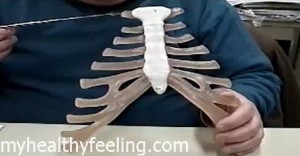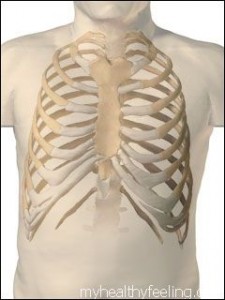What is costochondritis? Before we understand the treatment, let us know what this disease means. Costochondritis is a physical malfunction that is characterized by inflammation experienced at the cartilage region that connects the breast bone and ribs. It is essential to have basic information about the physical disorder. This article will help you have some information about costochondritis symptoms, treatment and causes.
According to several surveys conducted in recent times it is determined that approximately 650,000 chest ache cases are diagnosed annually, particularly seen in teenagers ageing between 10 to 21 years. It is also studied that most of these cases are due to costochondritis. This physical malfunction is also commonly known as chest wall pain. It is also scientifically referred to as costosternal syndrome or also as costosternal chondrodynia. This physical condition can also maturate to Tietze syndrome. In some cases swelling of chest may be seen along with chest pain, this condition is then referred to as Titze syndrome.
Costochondritis causes:
Most of the times costochondritis is also determined as idiopathic conditions as the causes that onsets the disorder is not confirmed or certainly identifiable. However, the medical industry explains about some factors that are assumed to be associated with the development of costochondritis. One of these factors also includes costosternal infection which is spotted at the area where ribs and breastbone are connected with each other. These infections can be categorized as viral infection, bacterial infection or any diseases like fibromyalgia. There are possibilities that people before suffered from severe chest injuries may also develop costochondritis symptoms.
Costochondritis Pictures
Check out Costochondritis photos to find out where the joints are located. The area wherein, the ribs are linked to the breastbone is known as the costosternal joint
Costochondritis Symptoms:
. While speaking about costochondritis symptoms, tenderness and pain in costosternal area is considered as the one of the symptoms. The pain experienced under the prevalence of this disorder may be intolerable; however, the pain may become less irritating. The patient may experience aches on both sides of the breastbone but most people report about the pain arising mostly from the left portion of the breastbone. In some cases patients may even complain about uneasy breathing or/and coughing or they may also experience pain at their back or stomach.
Costochondritis treatment:
It is believed that one of the most common costochondritis treatments is to leave the condition untouched. It is said that the issue may ebb away with time; however, in some cases the pain may persist for approximately one or two weeks. However, it is advisable to consult a doctor to be on the safer side or at least to seek alleviation from the pain. The doctor may help you get relief from the inflammation through drugs such as antidepressants and NSAIDS which is Non-Steroidal Anti-inflammatory Drugs.
The treatment starts at home; you should take rest when diagnosed with it. Avoid performing heavy activities which may worsen the condition. However, going for mild exercises may be beneficial. It is no doubt that medicines will serve as an efficient treatment. But added measures to prevent the physical condition from maturating further are also essential. Hence, while you seek costochondritis treatment, consider appropriate rest along with doctor’s instructions.


This is a very serious condition & can be very scary. As for myself, I’m 38 y/o and I have a history of respiratory failure & cardiac issues. When it flares up for my, I always end up in the hospital, taking all sorts of test so that my P.C.P., would know exactly which form of treatment to give me.